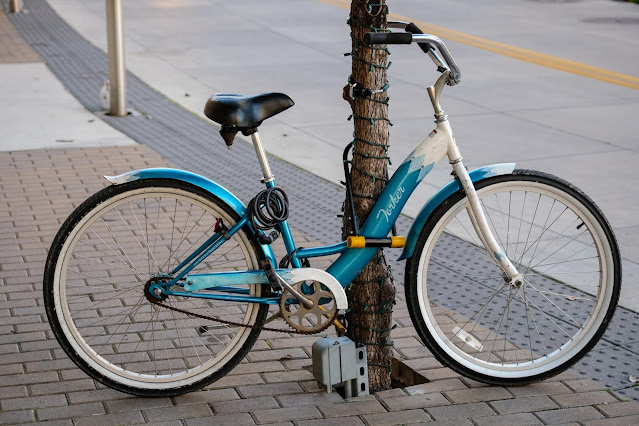In days of yore I had a radius from Austin beyond which I would not drive on an assignment. Every once in a great while I broke the rule and drove a bit further away but those were usually when an assignment called for more gear than one could safely and economically transport on a commercial airline. For example, jobs that called for: lots of big strobes, lots of large lighting gear, huge scrims and lots of redundant cameras and lenses. For the most part my boundaries equal the distance and time to drive between Austin and Dallas.
It's a pretty big circle and includes most of the major cities in Texas. When one can drive to Houston in three hours it just doesn't make sense to spend two hours getting to, and waiting at, the airport, deplaning at the other end and wrangling luggage, getting the luggage to the rental car depot, etc, etc. Your time commitment may actually exceed that required to just drive there.
But on the other hand, when I was doing jobs in places like North Carolina one day and Florida the next driving between the two was out of the question. And driving to either location from Austin would have been about as inefficient as I could imagine.
That was all before the pandemic upended travel in a dramatic way. Now the lines at the airports are even longer (because of social distancing, etc.) and rental cars are as scarce as ice cubes in the desert and pricier than a mortgage. Now I feel like I need to recalculate the driving radius and figure out some new boundaries.
Also, just because I've been vaccinated doesn't mean I want to take chances with a Southwest Airlines flight full of dumbass yahoos who think the earth is flat, viruses are the will of a vindictive baby Jesus, and that face masks are for sissies and liberals. In fact, when I called my dentist to reschedule an appointment because of my travel schedule they wanted to know if I was flying since their policy is to wait for at least ten days after any flight before admitting one into their office. I figure there's good logic to that and it conveys also to me seeing clients after a flight!
So, here's my current planning conundrum: I am booked to photograph an assignment in Sante Fe, NM. at the end of this month. I looked up travel information and found that there are no reasonable direct flights from Austin to Sante Fe. I would be booking Southwest Airlines to fly from Austin to Dallas and then from Dallas to Sante Fe. When I get there I'll have to have a rental car. There are none.
The flight time is a little over seven hours for both legs. Add two hours for initial arrival and check-in. That puts us over nine hours. Add an hour to fetch luggage, get a rental car (none currently exist) and get to my hotel. We're looking at ten hours and change to go from door-to-door. That's contingent on no one on the flight tossing down their face mask and challenging a flight attendant which might require us to sit at a gate and wait for police to come and remove the nut job.
The drive from Austin to Sante Fe is about 650 miles. The estimated time on all the mapping apps is about 11 hours of drive time. Add in some breaks for the restroom, coffee regeneration and food and we'll call it 13 hours. I have a new-ish car with only 16,000 miles on the odometer. I can bring all the camera gear I'd ever want to play with and I can hang up suits and dress shirts so they are fresh and ready to go the next morning.
I'm definitely driving and I guess this means that for now I'll extending my boundary range from Austin to a max of about 700 miles. I'd bill for travel days on either end of the project anyway.
It's interesting that we now have different pain points to take into consideration when traveling for work. On some level I think air travel is probably safer than indoor dining at restaurants but I think you are still taking a risk given that we don't know whether or not vaccinated passengers, exposed to the Covid virus, can pass it on to unvaccinated people in turn. My concern is not so much for my personal health but concern for those I'll subsequently come into contact with.
I have always wanted to do a project in Sante Fe. I think driving there is actually more fun given that my return trip isn't bookended by any particular schedule or obligations and I could come back through the White Sands area and the through El Paso and on to Marfa, Texas before heading home. Lots of places to stop and take photographs.
Look for the silver lining in every choice. There's generally always one there.


